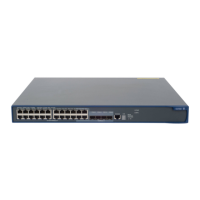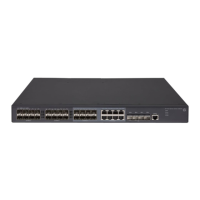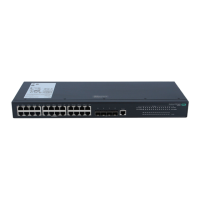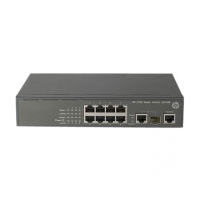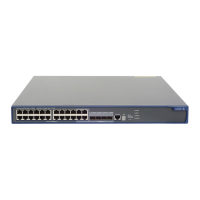1. Plan IRF fabric setup
Plan the installation site and IRF fabric setup parameters:
• Planning IRF fabric size and the installation site
• Identifying the master switch and planning IRF member IDs
• Planning IRF topology and connections
• Identifying physical IRF ports on the member switches
• Planning the cabling scheme
2. Install IRF member
switches
See "Installing the switch in a 19-inch rack" a
nd "Mounting the switch on a
workbench."
3. Connect the grounding
cable, power supplies
(optional), and power
cords
See "Grounding the switch" a
nd "Connecting the power cord."
If an HP 5500-24G-SFP EI (2 slots) or 5500-24G-SFP EI TAA (2 slots) switch
is used, also see "Installing/removing a power supply."
4. Power on the switches
N/A
5. Install interface cards
See "Installing/removing an interface card."
6. Configure basic IRF
settings
See "Configuring basic IRF settings."
7. Connect the physical IRF
ports
See "Connecting the physical IRF ports."
All switches except the master switch automatically reboot, and the IRF fabric
is established.
Planning IRF fabric setup
Planning IRF fabric size and the installation site
Choose switch models and identify the number of required IRF member switches, depending on the user
density and upstream bandwidth requirements. The switching capacity of an IRF fabric equals the total
switching capacities of all member switches.
NOTE:
any topology change or replacement.
Identifying the master switch and planning IRF member IDs
Determine which switch you want to use as the master for managing all member switches in the IRF fabric.
An IRF fabric has only one master switch. You configure and manage all member switches in the IRF
fabric at the command line interface of the master switch.
NOTE:
IRF member switches will automatically elect a master. You can affect the election result by assigning a
high member priority to the intended master switch. For more information about master election, see
H
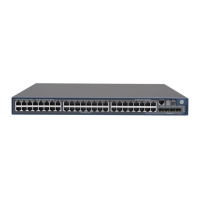
